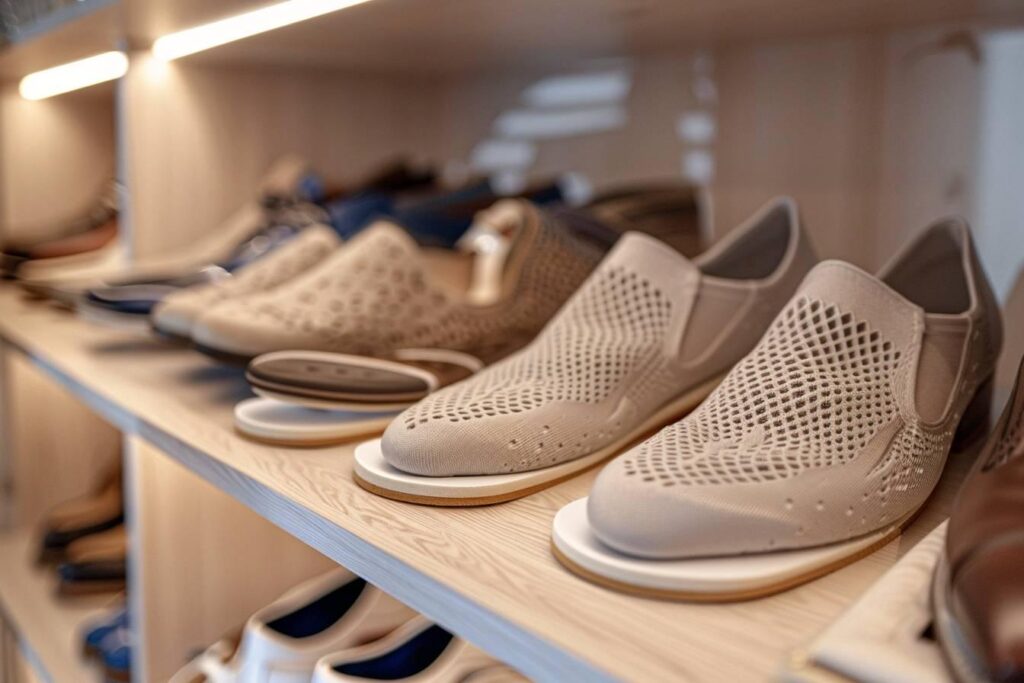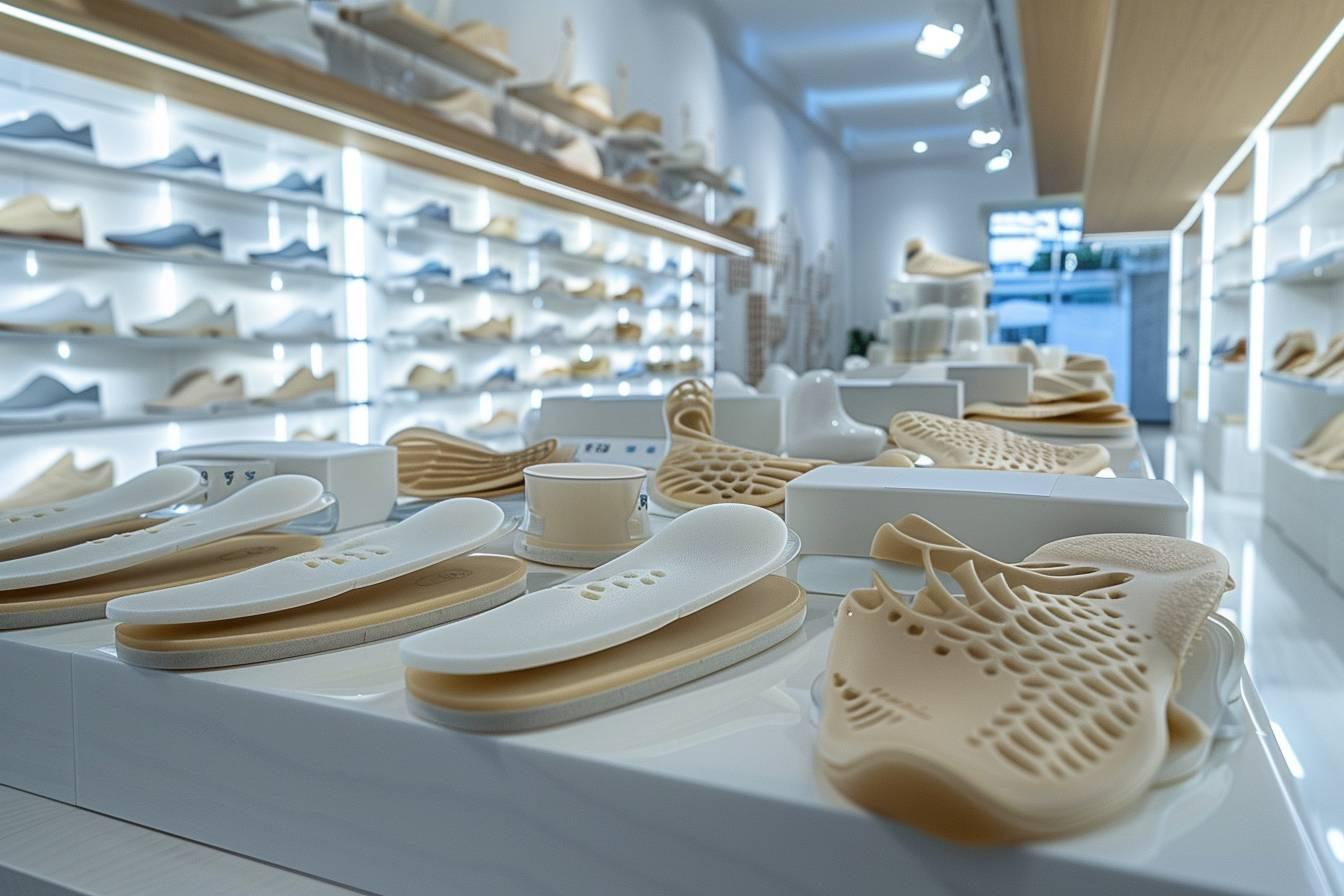Orthopedic insoles are essential for many individuals facing foot-related ailments. These medical devices play a crucial role in alleviating discomfort and enhancing mobility. Their design caters to various conditions, ensuring targeted support and correction.
Overview of orthopedic insoles and their benefits
Orthopedic insoles are custom-made inserts designed to provide support, alleviate pain, and correct alignment issues in the feet. They are often used to treat a wide range of conditions, from flat feet to plantar fasciitis.
Key benefits of orthopedic insoles
Orthopedic insoles can offer numerous benefits, including :
- Improved foot support
- Enhanced comfort
- Pain relief in the feet, knees, and lower back
- Better alignment and balance
- Prevention of further injuries or complications
How orthopedic insoles work
The primary function of orthopedic insoles is to provide customized support to the foot’s structure, which can help relieve pain and prevent further injury. They are typically made of various materials, such as foam, plastic, or carbon fiber, and are designed to fit the unique shape and needs of the individual’s feet.
Many people turn to these insoles for conditions like plantar fasciitis, which causes heel pain and discomfort. By providing proper arch support and cushioning, orthopedic insoles can significantly reduce the strain on the plantar fascia.
Types of orthopedic insoles and their uses
Orthopedic insoles come in various types, each designed to address specific foot issues. Understanding the different types can help individuals choose the right insole for their needs.
Custom-made vs. over-the-counter
There are two main categories of orthopedic insoles : custom-made and over-the-counter.
- Custom-made insoles : These are tailored to fit an individual’s unique foot shape and specific medical condition. A healthcare professional usually designs them after conducting a thorough analysis of the individual’s feet.
- Over-the-counter insoles : These are mass-produced and can be found in many pharmacies and retail stores. While they may not offer the same level of customization as custom-made insoles, they can still provide significant relief for common foot ailments.
Specialized insoles for specific conditions
Different orthopedic insoles cater to various foot conditions :
- Arch support insoles : These are designed for individuals with flat feet or low arches. They provide the necessary support to maintain proper foot alignment and prevent excessive pronation.
- Cushioning insoles : Ideal for people with foot pain or those who stand for long periods, these insoles offer extra padding to reduce pressure on the feet.
- Heel cups : These insoles are specifically designed for treating conditions like heel spurs by providing targeted cushioning and support to the heel area.
Choosing the right orthopedic insole
Selecting the appropriate orthopedic insole is crucial for maximizing the benefits and ensuring foot health. Here are some factors to consider :
Assessing foot conditions and needs
Before purchasing an orthopedic insole, it’s essential to identify any existing foot problems and determine the specific support required. Consulting with a healthcare professional or a podiatrist can provide valuable insights and recommendations based on a detailed analysis of the individual’s feet.
Material and design considerations
The material and design of the insole significantly affect comfort and effectiveness. Common materials include foam, gel, cork, and thermoplastic. Each material offers different levels of cushioning, support, and durability.
Additionally, some insoles feature specific designs targeting particular areas of the foot, such as arch support or heel cushioning. Understanding these features can help make an informed decision.
For individuals suffering from flat feet, selecting an insole with appropriate arch support is crucial to prevent pain and maintain proper foot alignment.
Maintaining and replacing orthopedic insoles
To ensure that orthopedic insoles continue to provide the desired benefits, proper maintenance and timely replacement are essential.
Proper care and hygiene
Regular cleaning helps maintain the hygiene and effectiveness of the insoles. Most insoles can be cleaned with mild soap and water. It’s crucial to let them air dry completely before placing them back in the shoes.
Additionally, wearing clean socks and ensuring proper foot hygiene can further prolong the life of the insoles and prevent unpleasant odor and bacteria buildup.
When to replace orthopedic insoles
Over time, insoles can lose their shape and effectiveness due to wear and tear. Signs that an insole needs replacement include :
- Visible wear and tear
- Loss of cushioning or support
- Persistent foot pain or discomfort
Typically, orthopedic insoles should be replaced every 6 to 12 months, depending on the level of use and the material’s durability.
| Type of Insole | Average Lifespan | Material |
|---|---|---|
| Custom-made | 12-18 months | Foam, Carbon Fiber |
| Over-the-counter | 6-12 months | Gel, Thermoplastic |
| Cushioning insoles | 3-6 months | Foam, Gel |
By following these guidelines, individuals can ensure that their orthopedic insoles remain effective and provide continued relief and support.


